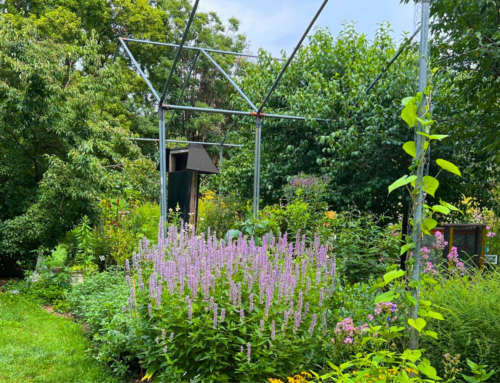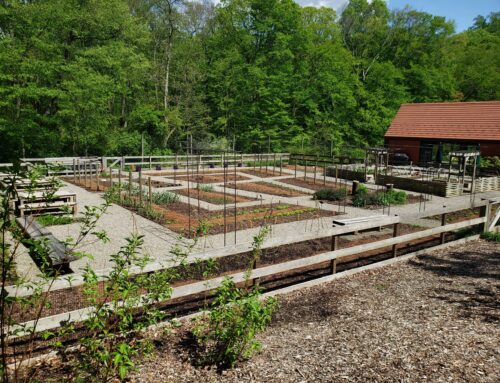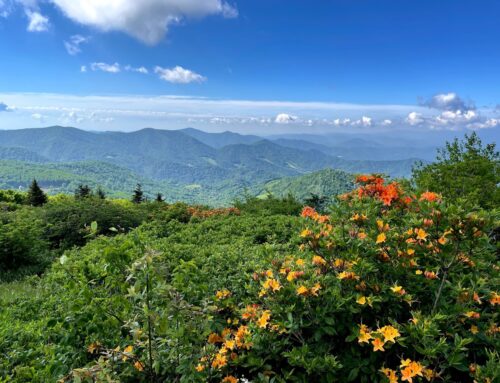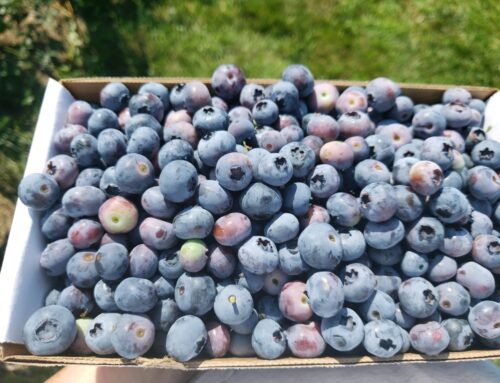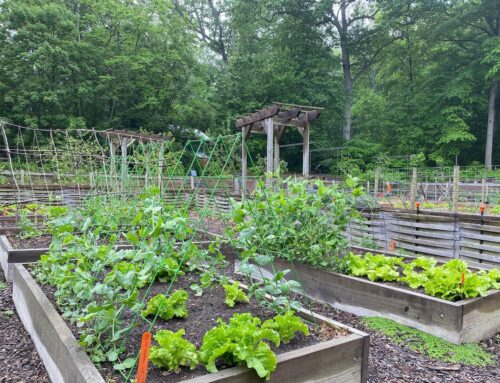Like many people, I’ve spent a lot of time outdoors over the last year – not just at Tyler Arboretum, but in our local parks and nature preserves too. It’s given me a greater appreciation for the special beauty of Tyler’s landscapes and the dedication of the people who care for them. One of those people is Mallory Smyth, and one of the areas she cares for is the Native Woodland Walk.
Deciduous woodland is the natural state of most of our region, and the Native Woodland Walk honors that heritage. It sparkles with wildflowers in the spring, and offers a cool sanctuary from the heat of summer. Fall colors are sublime here, and winter brings forth the textures of bark and the structures of trees and shrubs.
The intent of the Native Woodland Walk is to showcase the beauty and adaptability of native plants, but it wasn’t always so. In his tenure as Tyler’s first Director, in the 1950s, Dr. John Wister planted non-native rhododendrons in the area, many of which are still here. The focus shifted to Pennsylvania natives in the 1970s, and, in the mid-1990s, noted landscape designer W. Gary Smith created the garden we see today.

W.G. Smith’s design explicitly honored the existing tall trees: enormous tulip poplars, oaks, and beeches. Their high canopy creates an area that is shady, but not dark, cool in summer, and inviting all year round. W.G. Smith built around the existing structure of Wister’s rhododendrons, adding great sweeps of ferns and other groundcovers, and masses of deciduous shrubs. He augmented the existing bottlebrush thicket and created a pawpaw grove.
When Mallory came to the garden in 2014, it had not had a dedicated staff person caring for it in some time. She set about removing invasive weeds; pruning, rejuvenating and removing woody plants, as necessary; and refreshing perennial plantings. In talking to her, I was struck by Mallory’s sensitivity to the garden’s heritage: “Sometimes, simplicity can be more beautiful than reinventing the wheel.”
I took a walk with Mallory to learn more about her background and passion for native plants. “Thanks to my mom,” she told me, “I’ve been surrounded by plants my entire life. I grew up with houseplants and loved watching my mom tend to our small front yard garden in Philadelphia. As I grew older, I enjoyed making cut flower arrangements to bring indoors. I earned my Horticulture degree from Temple University, where native plants and sustainability were heavily emphasized. I worked in the woodland garden of the Ambler Arboretum as a student, and grew a deep appreciation for trees and woodland gardening.”
Mallory told me she really fell in love with public gardens during an internship at the Denver Botanic Gardens (you’ll see the passion she developed there for Alpine rock gardens reflected in the gravel garden near the Edible Garden Schoolhouse). Places like Tyler Arboretum, she says, provide wonderful opportunities to learn about plants and be immersed in nature.
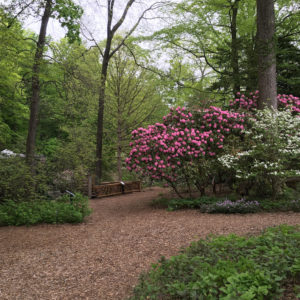
In addition to their ecological value as food sources for native insects and other animals, Mallory says native plants “thrive in our local garden settings, which results in lower maintenance. They can be both beautiful and purposeful.” Her focus has been on adding groundcover and shrubs, where needed. Among the plants she’s introduced into the garden: red-twig dogwoods with a rich fall color, Tiarella, Heuchera, and a hybrid of both: Heucherella. A guiding principle is the impact on visitors – providing visual interest throughout the year, demonstrating how native plants can be integrated into a home garden, and pruning, not just to keep paths clear, but to enhance them and provide moments of color and fragrance.
Mallory is supported in the Native Woodland Walk by an “awesome” team of dedicated volunteers. Under their stewardship, the Native Woodland Walk continues to evolve. They look forward this spring to planting over 500 new plants, nurtured over the winter from tiny plugs. In addition to woodland favorites like Pachysandra procumbens, varieties of Carex (sedges), and Tiarella (foam flower), they’ll be adding some sun-loving plants to attract pollinators to sunny “pockets” created where trees have fallen or been removed.
You’ll see Tyler’s Native Woodland Walk reflected at the Arboretum’s annual Plant Sale. April 30th will be the members preview, and the sale will be open to the general public May 1st and 2nd. In addition to the plants listed above, look for a wide variety of ferns, some favorite columbines (Aquilegia), Heuchera, Chelone and many more.


